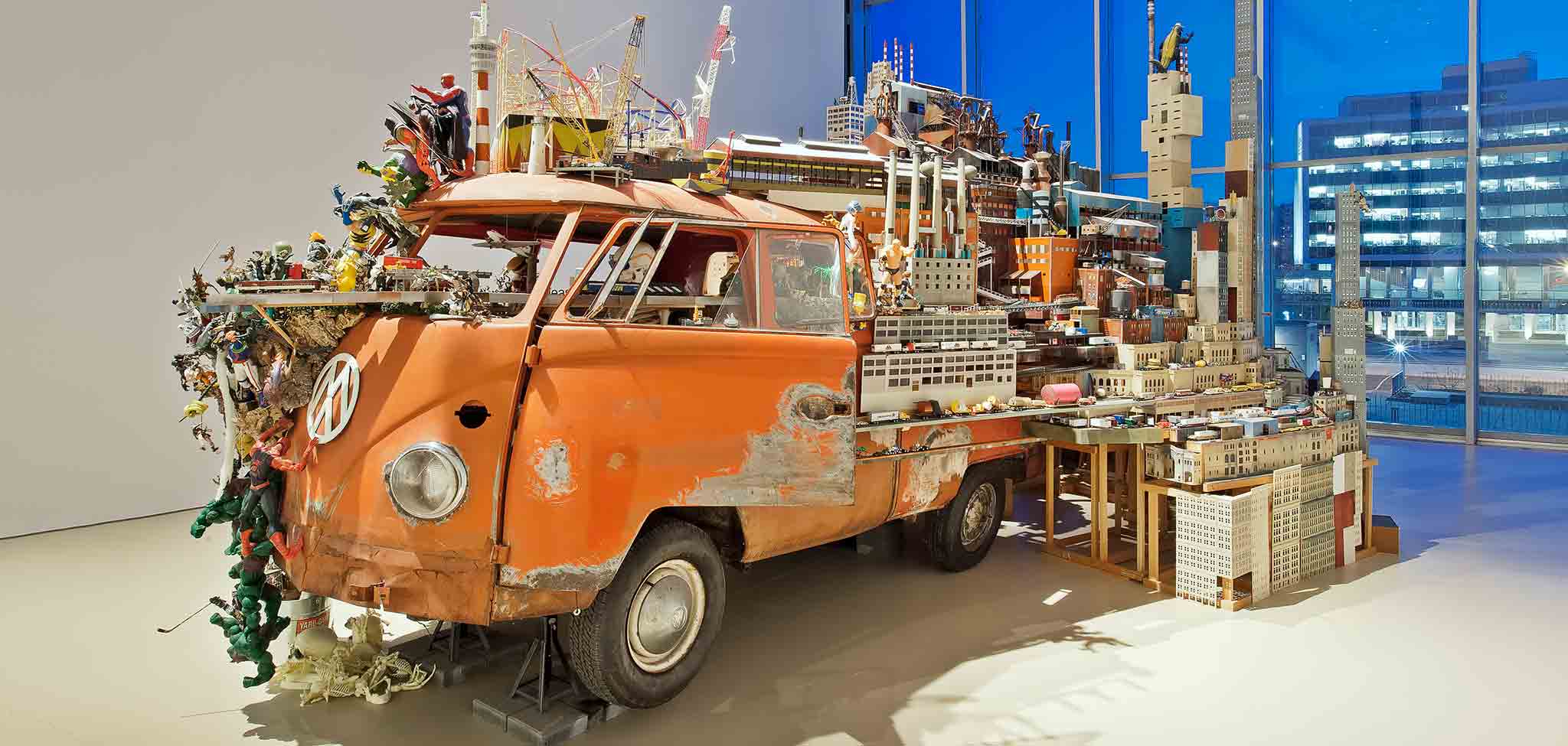Repeatedly in his work, Canadian artist Kim Adams has explored the patterns of a mobile society, creating works of art that are eccentric hybrids of the readymade.
Blending humour, satire and seriousness, he builds “worlds” as a means of social critique. Adams’ installations exist comfortably in the space that divides life and art. His works have been presented in two very different social worlds: in a densely social environment such as a park or street and in a museum setting like the Art Gallery of Hamilton. Neither setting is privileged.
A magnificent visual masterpiece, Bruegel-Bosch Bus consists of a 1960 Volkswagen that appears to pull a post-industrial universe displaying a cornucopia of fantastic and seductive worlds that play with our senses. This futuristic diorama is a permanent fixture in the AGH Sculpture Atrium overlooking the Irving Zucker Sculpture Garden, past Hamilton City Hall and the Niagara Escarpment.
Reminiscent of a previous installation by Adams titled Earth Wagons that presented a micro-model North American society fixed on leisure and entertainment, the Bruegel-Bosch Bus encapsulates the next whole world picture, a world in which reality and unreality, logic and fantasy, banality and sublimation of existence, form an inexplicable unity.
This ‘bus’ is a Kubrickesque megalopolis made of icons symptomatic in present society and draws upon urban fantasies, phantasmagoric, post-apocalyptic landscapes, and a plethora of different times and cultures. Buildings from different epochs are aligned side by side and space becomes an imaginary territory where chaos prevails.
In 2018 we installed a new artwork by Kim Adams. Donated by Adams, Artists’ Colony (Gardens), was created in 2012 and explores similar themes through HO scale model parts within a vitrine.
Header Image: Kim Adams (Canadian b. 1951), Bruegel-Bosch Bus, 1996-ongoing, sculpture-installation, 1959 Volkswagen bus, figurines, mixed media. Acquired with the assistance of the York Wilson Endowment Award at The Canada Council for the Arts, and with funds from the E. Muriel Baker Estate, the Russell Nelson Eden Estate, and the Walter and Duncan Gordon Foundation, 2001.





